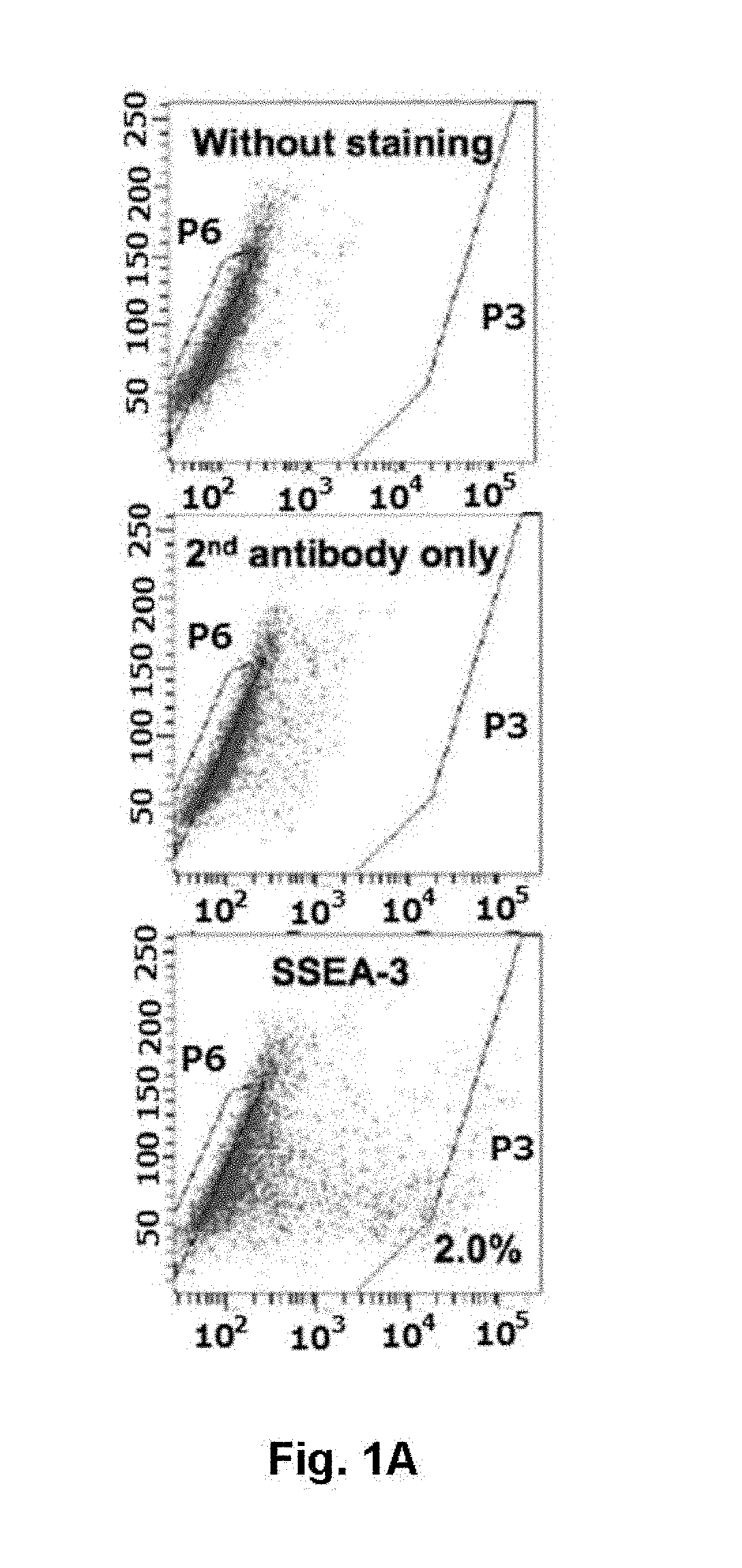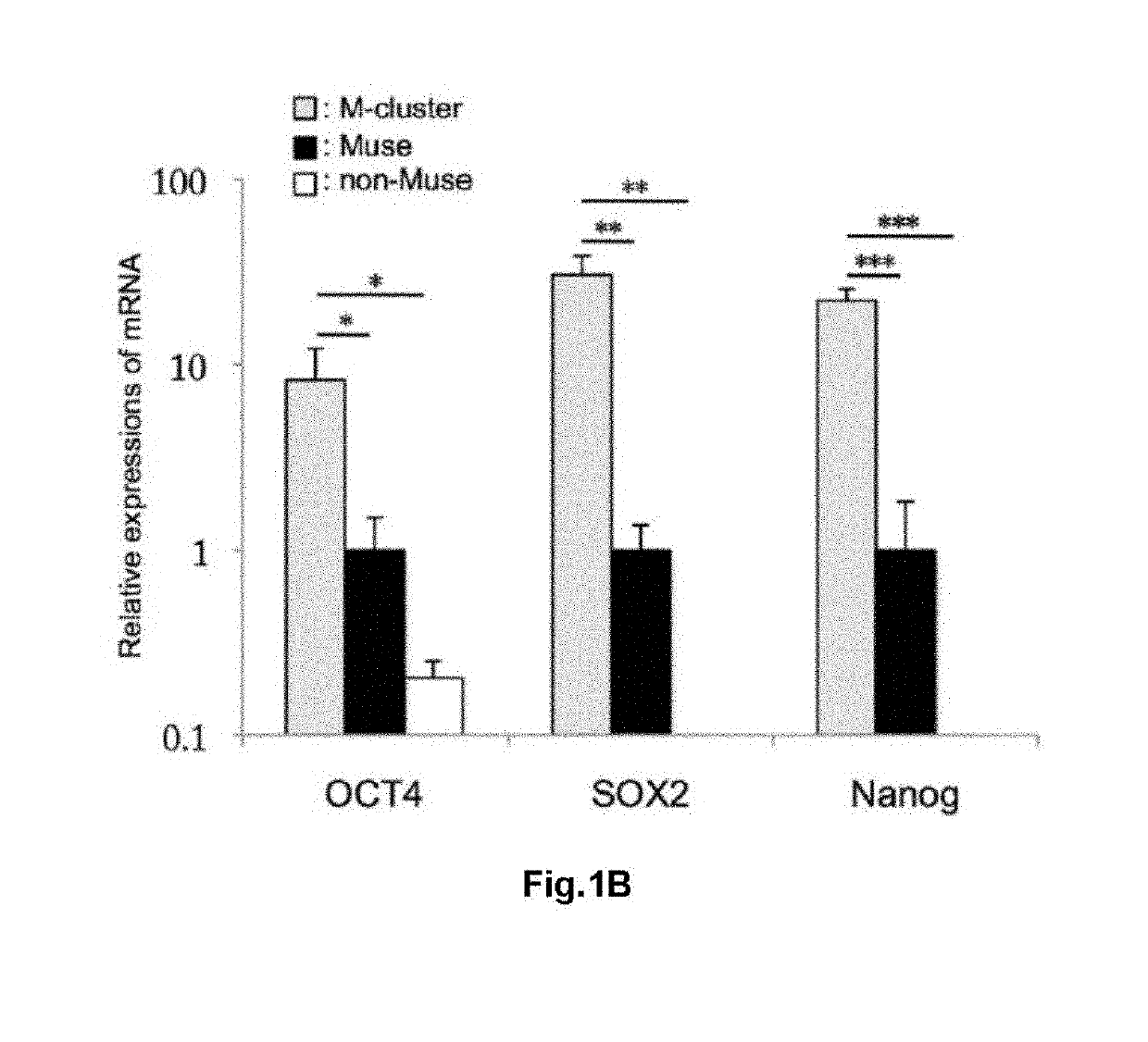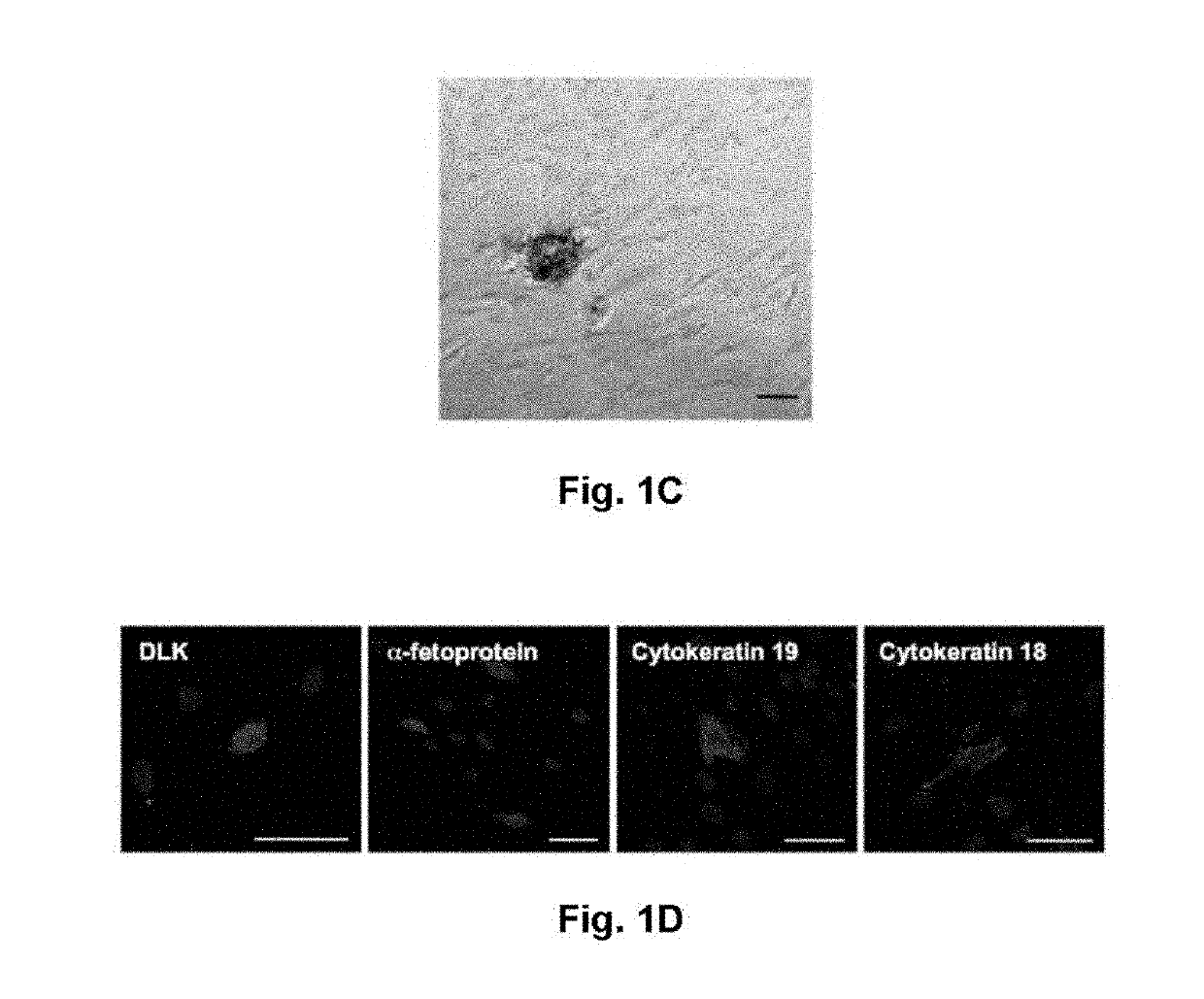Prophylactic or therapeutic agent for organ fibrosis
a technology of organ fibrosis and therapy agent, which is applied in the direction of medical preparations, nervous disorders, endocrine system disorders, etc., can solve the problems of poor disease prognosis, difficult to be treated by current medicines, and no effective medical treatment for serious liver cirrhosis liver cirrhosis, etc., to improve organ function, non-tumorigenic
- Summary
- Abstract
- Description
- Claims
- Application Information
AI Technical Summary
Benefits of technology
Problems solved by technology
Method used
Image
Examples
example 1
[0059]Transplantation of Human Muse Cell in Mouse Model with Liver Fibrosis
[0060]CB17 / Icr-Prkdc / CrlCrlj (SCID) mice were used in all studies. All animal experiments were conducted according to the guideline of the Animal Care and Experimentation Committee of Tohoku University (Sendai, Japan). With respect to experimental procedures for establishing the liver fibrosis model, see also International Journal of Molecular Science 2012; 13: 3598-3617 and Journal of Biochemistry 2003; 134: 551-558. Specifically, an SCID mouse model with liver fibrosis was produced by intraperitoneal injection of CCl4 (0.5 ml / kg).
[0061]Human Muse cells or non-Muse cells (5×104 cells) were injected into the tail vein of liver fibrosis model mice.
[0062]Significant differences between two groups were evaluated using Student's t test. Statistical significant differences among three or more groups were evaluated using one-way analysis of variance (one-way ANOVA) with Bonferroni's multiple com...
example 2
Evaluation of Muse Cells in a Skin Fibrosis Model
[0081]BLM-induced skin fibrosis mouse model was prepared according to the method described in Sci Rep. 2015 Aug. 20; 5: 12466. doi: 10.1038 / srep12466. Female C57BL6J mice (Japan SLC, Inc.) were used. For control group, physiologic saline was administered instead of BLM. At day 14 after the administration of BLM, 1×106 cells / weight (kg) of Muse cells were administered via their tail veins. On the other hand, for vehicle-treated group, a vehicle was administered via their tail veins at day 14.
[0082]Skin tissues were isolated at day 28 after the administration of BLM and subjected to collagen quantification, hematoxylin-eosin (HE) staining, and dermal thickness analysis.
[0083]The skin collagen analysis was performed as described below.
[0084]Skin sections were homogenized with 0.5 M acetic acid / pepsin solution, and stirred overnight at 4° C. The concentration of skin collagen in the obtained extract was measured by using Sircol collagen a...
example 3
Evaluation of Muse Cells in a Pulmonary Fibrosis Model
[0090]BLM pulmonary fibrosis model mice were prepared by intratracheal administration of BLM solution (14 μg / 25 μL / lung) (Japanese Journal of Medicine and Pharmaceutical Science, 62 (4): 661-668, 2009). Male Crl: CDI (ICR) mice (Charles River Laboratories Japan, Inc.) were used. Twenty-one days after the administration of BLM, 1×106 cells / weight (kg) of Muse cells, or vehicle, were administered via their tail veins.
[0091]After extracting lungs were fixed with formalin, Masson's trichrome-staining samples were prepared. Using the Masson's trichrome-staining samples, scoring of fibrosis was carried out for each leaf of the lungs. Pulmonary fibrosis score was classified according to the evaluation criteria of pulmonary fibrosis described below. Then, images close to the average of the pulmonary fibrosis score of each group was taken (FIG. 11). Fibrosis scores were evaluated using lung tissues 21 days and 35 days after administration...
PUM
 Login to View More
Login to View More Abstract
Description
Claims
Application Information
 Login to View More
Login to View More - R&D
- Intellectual Property
- Life Sciences
- Materials
- Tech Scout
- Unparalleled Data Quality
- Higher Quality Content
- 60% Fewer Hallucinations
Browse by: Latest US Patents, China's latest patents, Technical Efficacy Thesaurus, Application Domain, Technology Topic, Popular Technical Reports.
© 2025 PatSnap. All rights reserved.Legal|Privacy policy|Modern Slavery Act Transparency Statement|Sitemap|About US| Contact US: help@patsnap.com



